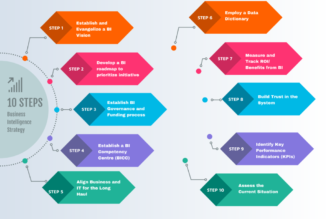As the initial shock of the coronavirus pandemic subsides, South Africa’s small business leaders must now pick themselves up and begin to rebuild. For many businesses, working remotely and with reduced staff has been incredibly challenging, but technology has played a fundamental role in allowing work to continue.
One positive to come from this crisis is that lockdown compelled businesses to adopt more advanced technologies than they may otherwise have considered.
Many businesses have spent months focusing on the immediate term and making decisions necessary for their survival. As government restrictions loosen and the community begins to consider medium- and long-term priorities, this is the perfect time to reconsider the technology you use and how it will help you to reach your goals.
Investing for the future
Technology can be expensive, and at a time when businesses have already slashed spending, it’s understandable that there’s hesitance to spend on new tech. However, having the right tools in place is an investment in the business’s future, and can be the key to building back faster and stronger.
This crisis has shown that businesses who have been traditional at the core are now discovering that digital processes offer far greater scalability and resilience. Many will struggle to thrive in the long-term if they continue using traditional resource-intensive methods.
Consider the price of new technology not based solely on its price tag, but on whether or not it will pay for itself over time. Technology that automates tasks, for instance, will save you time, reduce mistakes, streamline processes, and ultimately cut costs in the longer-term. Half (53%) of small business owners surveyed before COVID hit found that adopting technology resulted in ‘somewhat big’ or ‘big’ increases to their profitability.
For instance, cloud technology often works out to be cheaper in the long run than running computing locally. The software as a service (SaaS) model also typically uses fixed monthly payments rather than large sums upfront and is easier to trial before making the investment.
Knowing where to start
With so many choices out there, picking the right technology for your business can feel impossible. Once you start looking more closely, however, a small number of solutions usually stand out from the crowd. You’ll quickly recoup the time you take to think through your requirements, research solutions, pick a provider, and implement it.
Bring the team on the journey
There has been great progress in tech adoption – an annual small business survey shows an increase of nearly 50% in cloud accounting adoption over the last three years. Despite this, half of the small businesses said they could do more with their current IT set-up.
Adopting new technology is the first step, teams need to embrace it too. New technology isn’t something that business leaders can implement unilaterally; the reasoning should be explained to employees. Make sure the whole team knows what success looks like from the start.
Learning a new system can be frustrating, so keep things simple, ditch the jargon and invest in the right support and training to help staff get the most from it. Create some champions in your business to help train-up and support other employees in using new technology. There will inevitably be some disruption in the very short term when transitioning, but remember the longer-term savings and boost in efficiency.
Another way to increase buy-in is by encouraging ownership. Give employees the confidence to experiment with the latest technology and make recommendations.
Building the right toolkit
There are cloud-based tools to support almost every area of business, from estimating and quoting to resource management, recruiting and marketing – the list goes on.
It’s more important than ever that our technology enables us to collaborate and share information easily. Embracing cloud technology allows you to work with a community of partners that all integrate seamlessly to support your business.
Looking to the future
It’s evident that technology is, and will remain, at the heart of businesses bouncing back from the pandemic. Some SMEs have embraced digital and technology for the first time, and others have built on pre-existing offerings. But in most cases, this period has been a time of uncovering a radical new approach to work and it has proved that faced with any situation, we can always find ways to adapt.
By Colin Timmis, GM of Xero South Africa









